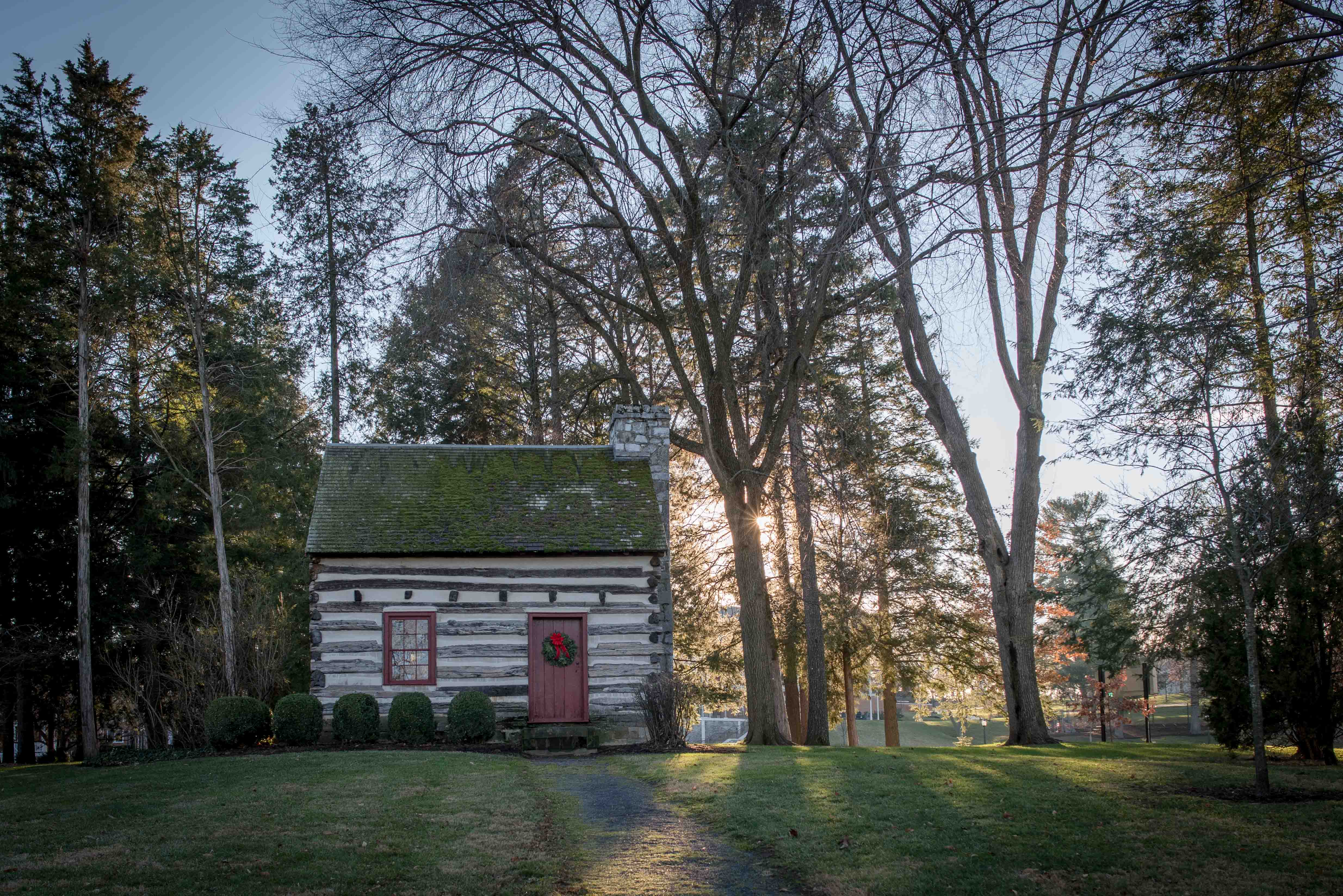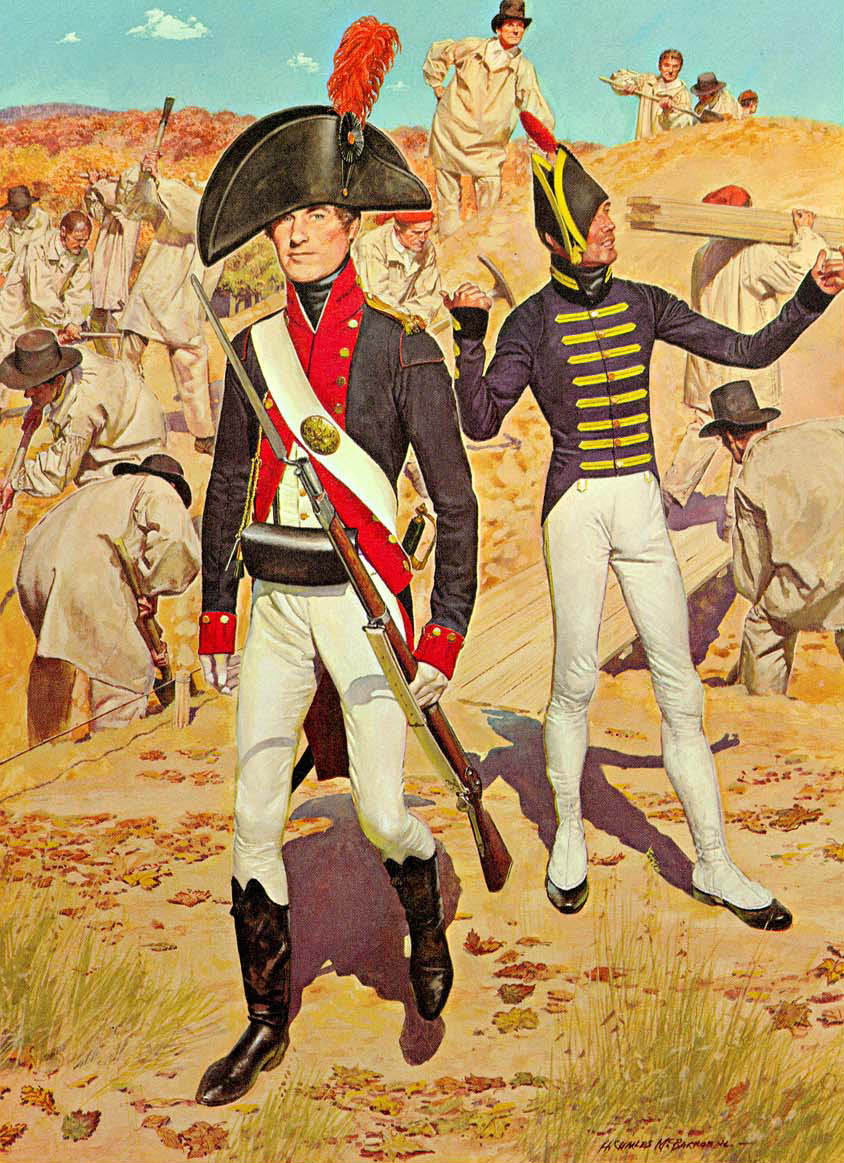|
John F. Reynolds
John Fulton Reynolds (September 21, 1820 – July 1, 1863)Eicher, pp. 450-51. was a career United States Army officer and a general in the American Civil War. One of the Union Army's most respected senior commanders, he played a key role in committing the Army of the Potomac to the Battle of Gettysburg and was killed at the start of the battle. Early life and career Reynolds was born in Lancaster, Pennsylvania, one of nine surviving children of John Reynolds (1787–1853) and Lydia Moore Reynolds (1794–1843). Two of his brothers were James LeFevre Reynolds, Quartermaster General of Pennsylvania, and Rear Admiral William Reynolds. Prior to his military training, Reynolds studied in nearby Lititz, about from his home in Lancaster. Next he attended a school in Long Green, Maryland, and finally the Lancaster County Academy. Reynolds was nominated to the United States Military Academy in 1837 by Senator James Buchanan, a family friend, and graduated 26th of 50 cadets in t ... [...More Info...] [...Related Items...] OR: [Wikipedia] [Google] [Baidu] |
Lancaster, Pennsylvania
Lancaster ( ) is a city in Lancaster County, Pennsylvania, United States, and its county seat. With a population of 58,039 at the 2020 United States census, 2020 census, it is the List of municipalities in Pennsylvania, eighth-most populous city in the state. It is a core city within South Central Pennsylvania, with 552,984 residents in the Lancaster Metropolitan statistical area, metropolitan area. Settled in the 1720s, Lancaster is one of the oldest inland cities in the US. It served as the capital of Pennsylvania from 1799 to 1812. The city's primary industries include healthcare, tourism, public administration, manufacturing, and both professional and semi-professional services. Lancaster is located southwest of Allentown, Pennsylvania, Allentown and west of Philadelphia and is a hub of Pennsylvania Dutch Country. History 18th century Originally called Hickory Town, Lancaster was renamed after the English city of Lancaster, Lancashire, Lancaster by native John Wright ... [...More Info...] [...Related Items...] OR: [Wikipedia] [Google] [Baidu] |
Battle Of Fredericksburg
The Battle of Fredericksburg was fought December 11–15, 1862, in and around Fredericksburg, Virginia, in the Eastern Theater of the American Civil War. The combat between the Union Army, Union Army of the Potomac commanded by Major general (United States), Maj. Gen. Ambrose Burnside and the Confederate States Army, Confederate Army of Northern Virginia under General officers in the Confederate States Army#General, Gen. Robert E. Lee included futile frontal attacks by the Union army on December 13 against entrenched Confederate States of America, Confederate against a feature of the battlefield that came to be remembered as the 'sunken wall' on the heights overlooking the city. It is remembered as one of the most one-sided battles of the war, with Union casualties more than twice as heavy as those suffered by the Confederates. A visitor to the battlefield described the battle as a "butchery" to President of the United States, U.S. President Abraham Lincoln. Burnside planned to ... [...More Info...] [...Related Items...] OR: [Wikipedia] [Google] [Baidu] |
Fort McHenry
Fort McHenry is a historical American Coastal defense and fortification, coastal bastion fort, pentagonal bastion fort on Locust Point, Baltimore, Locust Point, now a neighborhood of Baltimore, Maryland. It is best known for its role in the War of 1812, when it successfully defended Inner Harbor, Baltimore Harbor from an attack by the United Kingdom of Great Britain and Ireland, British Royal Navy, navy from Chesapeake Bay on September 13–14, 1814. The fort was built in 1798 and was used continuously by U.S. armed forces through World War I and by the United States Coast Guard in World War II. It was designated a national park in 1925, and, in 1939, was redesignated a U.S. National Monument. During the War of 1812, an American storm flag, , was flown over Fort McHenry during the British bombardment of the fort. The flag was replaced early on the morning of September 14, 1814, with a larger American garrison flag, . The larger flag signaled American victory over the British in ... [...More Info...] [...Related Items...] OR: [Wikipedia] [Google] [Baidu] |
Brevet (military)
In military terminology, a brevet ( or ) is a warrant which gives commissioned officers a higher military rank as a reward without necessarily conferring the authority and privileges granted by that rank. The promotion would be noted in the officer's title (for example, "Bvt. Maj. Gen. Joshua L. Chamberlain" or "Bvt. Col. Arthur MacArthur"). It is not to be confused with a '' Brevet d'état-major'' in Francophone European military circles, where it is an award, nor should it be confused with temporary commissions. France In France, ''brevet'' is a word with a very broad meaning, which includes every document giving a capacity to a person. For instance, the various military speciality courses, such as military parachutism, are ended by the award of a brevet. The more important brevet in the French military is that of the École de guerre (''lit''. "school of war"), the French Staff College. Between 1870 and 1940, an ''officier breveté'' was a graduate of the ''École ... [...More Info...] [...Related Items...] OR: [Wikipedia] [Google] [Baidu] |
James Buchanan
James Buchanan Jr. ( ; April 23, 1791June 1, 1868) was the 15th president of the United States, serving from 1857 to 1861. He also served as the United States Secretary of State, secretary of state from 1845 to 1849 and represented Pennsylvania in both houses of the U.S. Congress. Buchanan was an advocate for states' rights, particularly regarding Slavery in the United States, slavery, and minimized the role of the Federal government of the United States, federal government preceding the American Civil War. Buchanan was a lawyer in Pennsylvania and won his first election to the state's Pennsylvania House of Representatives, House of Representatives as a Federalist Party, Federalist. He was elected to the U.S. House of Representatives in 1820 and retained that post for five terms, aligning with Andrew Jackson's Democratic Party (United States), Democratic Party. Buchanan served as Jackson's List of ambassadors of the United States to Russia, minister to Russia in 1832. He won t ... [...More Info...] [...Related Items...] OR: [Wikipedia] [Google] [Baidu] |
United States Senator
The United States Senate consists of 100 members, two from each of the 50 U.S. state, states. This list includes all senators serving in the 119th United States Congress. Party affiliation Independent Senators Angus King of Maine and Bernie Sanders of Vermont Senate Democratic Caucus, caucus with the Democratic Party. Leadership Presiding officers Majority leadership (Republican) Minority leadership (Democratic) List of senators See also * Seniority in the United States Senate * List of current members of the United States House of Representatives * List of members of the United States Congress by longevity of service * List of United States Senate committees * List of United States congressional joint committees * Religious affiliation in the United States Senate * Shadow congressperson Notes References {{US Order of Precedence 117th United States Congress, ** 21st-century United States government officials, Senate Lists of current office-holders ... [...More Info...] [...Related Items...] OR: [Wikipedia] [Google] [Baidu] |
United States Military Academy
The United States Military Academy (USMA), commonly known as West Point, is a United States service academies, United States service academy in West Point, New York that educates cadets for service as Officer_(armed_forces)#United_States, commissioned officers in the United States Army. The academy was founded in 1802, and it is the oldest of the five United States service academies, American service academies. The Army has occupied the site since establishing a fort there in 1780 during the American Revolutionary War, as it sits on strategic high ground overlooking the Hudson River north of New York City. West Point's academic program grants the Bachelor of Science degree with a curriculum that grades cadets' performance upon a broad academic program, military leadership performance, and mandatory participation in competitive athletics. Candidates for admission must apply directly to the academy and receive a nomination, usually from a member of United States Congress, Congr ... [...More Info...] [...Related Items...] OR: [Wikipedia] [Google] [Baidu] |
Long Green, Maryland
Long Green is an unincorporated community in Baltimore County, Maryland, United States. Until 1958, the community was served by the Maryland and Pennsylvania Railroad at milepost 15.8. Prospect Hill was listed on the National Register of Historic Places in 1973. Long Green was once home to an Amish community. The Amish community in Long Green was founded in 1833 and lasted for 120 years, before disappearing in the 1950s. The community was founded by Lancaster County Amish, but few settlers moved to the area because Maryland was a slave state at the time. Few Amish people crossed the Mason–Dixon line, due to the Amish opposition to slavery. An Amish meetinghouse was constructed in 1899, but the community never grew large. The community dwindled in size over time, with the last Amish person dying in 1953. One of the oldest buildings in Long Green is the Wilson United Methodist Church, built in 1892 in the Gothic Revival style. A previous Methodist meeting house was buil ... [...More Info...] [...Related Items...] OR: [Wikipedia] [Google] [Baidu] |
Lititz, Pennsylvania
Lititz is a Borough (Pennsylvania), borough in Lancaster County, Pennsylvania, United States, north of Lancaster, Pennsylvania, Lancaster. As of the 2020 United States census, 2020 census, it had a population of 9,370. History Lititz was founded by members of the Moravian Church in 1756 and was named by a German form of name of the Litice Castle in Bohemia. Lititz was one of four leading Moravian communities in Pennsylvania, the other three being Bethlehem, Pennsylvania, Bethlehem, Emmaus, Pennsylvania, Emmaus, and Nazareth, Pennsylvania, Nazareth. For a century, only Moravians were permitted to live in Lititz. Until the middle of the 19th century, only members of the congregation could own houses; others were required to lease. The lease system was abolished in 1855, just five years before the beginning of the American Civil War. During the American Revolutionary War, Brethren's House, built in 1759, was used as a hospital for Continental Army troops, and a number of Co ... [...More Info...] [...Related Items...] OR: [Wikipedia] [Google] [Baidu] |
William Reynolds (naval Officer)
William Reynolds (December 10, 1815 – November 5, 1879) was a rear admiral in the United States Navy who served during the American Civil War. His younger brother was United States Army general John F. Reynolds. Reynolds was born in Lancaster, Pennsylvania on December 10 1815, and joined the Navy in 1831. His first assignment was to the , in which he toured Africa, Brazil and the Malay Archipelago. In 1837, he was promoted to passed midshipman and to lieutenant in 1841. From 1838 to 1842, he served with the U.S. Exploring Expedition, and was among the first to sight the Antarctic mainland, along with Henry Eld. In 1842, he was assigned to the . In 1862, he was promoted to commander and given his first ship, the , a receiving ship at Port Royal, South Carolina. (When that ship was replaced by the , he was transferred to command it.) He was subsequently given command of the depot there. In 1865, Reynolds was promoted to captain and given command of the screw sloop after th ... [...More Info...] [...Related Items...] OR: [Wikipedia] [Google] [Baidu] |
Rear Admiral (United States)
A rear admiral in four of the uniformed services of the United States is one of two distinct ranks of commissioned officers; "rear admiral (lower half)," a one-star flag officer, and "rear admiral" (sometimes referred to as "rear admiral (upper half)"), a two-star flag officer. The two ranks are only utilized by the United States Navy, U.S. Coast Guard, USPHSCC, U.S. Public Health Service Commissioned Corps, and the NOAA Corps, National Oceanographic and Atmospheric Administration Commissioned Officer Corps. In contrast, in most other nations' rank-bearing services, the term "rear admiral" refers exclusively to two-star flag officer rank. Rear admiral (lower half) Rear admiral (lower half) (abbreviated as RDML) is a one-star rank, one-star flag officer, with the U.S. uniformed services pay grades, pay grade of in the United States Navy, the United States Coast Guard, the United States Public Health Service Commissioned Corps, and the NOAA Commissioned Officer Corps, National ... [...More Info...] [...Related Items...] OR: [Wikipedia] [Google] [Baidu] |







